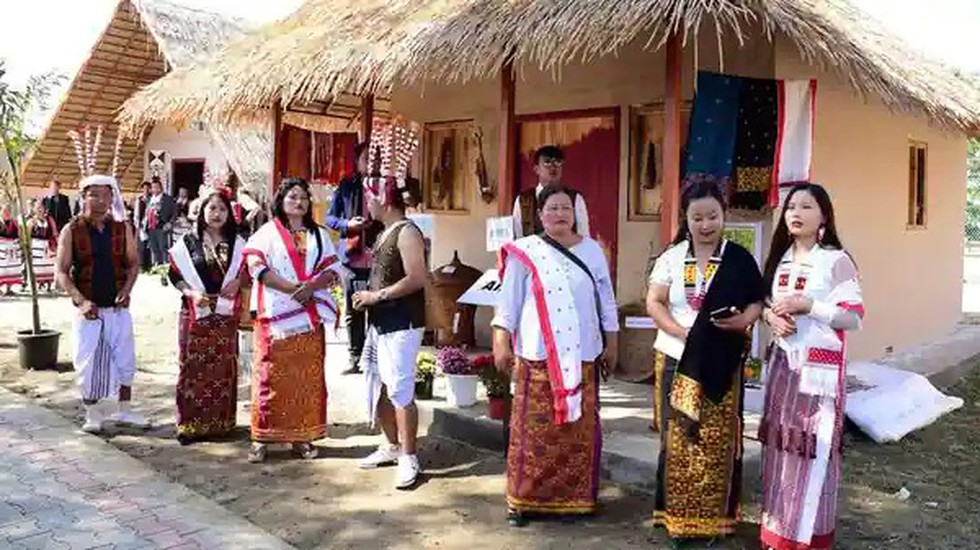
About:
- Every year the State of Manipur celebrates the “Manipur Sangai Festival” from 21st to 30th November.
- The objective is to showcase Manipur as a world class tourism destination.
- The ‘Festival’ is named after the State animal, Sangai, the brow-antlered deer found only in Manipur.
- It started in the year 2010.
- The theme of this year’s Sangai festival is “Festival of oneness”.
- Every edition of the festival showcases the tourism potential of the state in the field of Arts & Culture, Handloom, Handicrafts, Indigenous Sports, Cuisine and Music of the state etc.
Sangai Deer:
- Scientific Name: Rucervus eldii.
- Common Name: Sangai, Brow antlered deer, Dancing Deer.
- Population: About 260 (acc. to a joint census conducted by the Forest Department in 2016).
- Habitat and Distribution: It is found only in Keibul Lamjao National Park – the largest single mass of phumdi is in the Loktak Lake – in Manipur’s Bishnupur district.
Characteristics:
- Sangai is a medium-sized deer, with uniquely distinctive antlers, with extremely long brow tine, which form the main beam.
- The forward protruding beam appears to come out from the eyebrow, hence called the brow-antlered deer.
- It has a dark reddish-brown winter coat, which turns paler in summer.
- The deer walks on the hind surface of its pasterns with mincing hops over floating foliage, and is hence also called the Dancing Deer.
Status:
- State animal of Manipur.
- Schedule-1 of Wildlife (Protection) Act, 1972.
- Endangered on IUCN Red List.
Conservation Issues:
- Sangai faces threat from steadily degenerating habitat of phumdi as a result of continuous inundation and flooding caused due to artificial reservoir.
- There is also invasion of non-native plants like Paragrass.
- It also faces threats of diseases from the livestock, inbreeding depression and poaching.
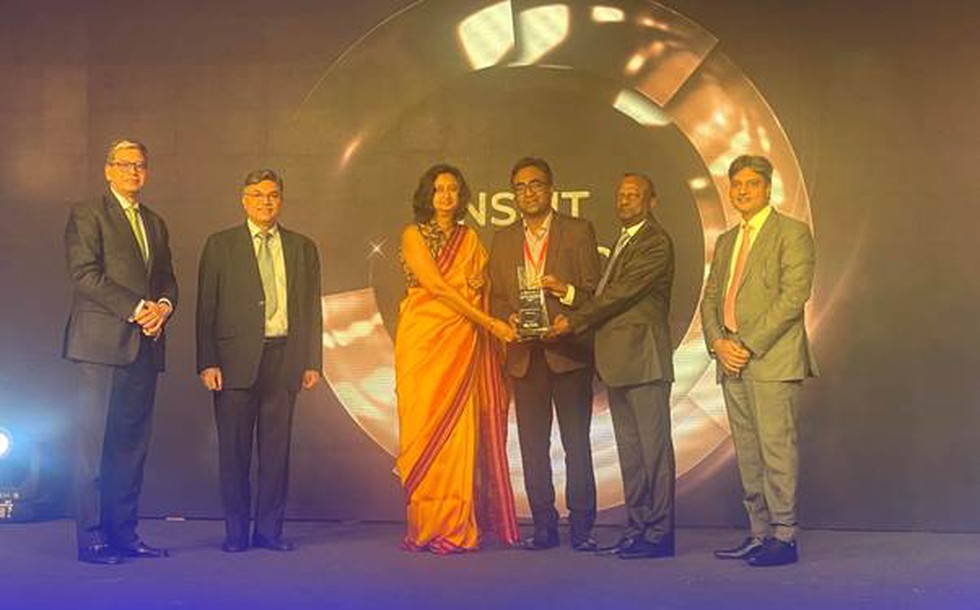
About:
- The award was presented for building the technology infrastructure to support Manthan.
- Manthan is a platform that promotes collaboration at scale between industry and the scientific research and development ecosystem.
- The development of the platform was conceptualized and implemented by the Office of the Principal Scientific Adviser (PSA) to the Government of India.
- It is aimed at promoting collaboration between industry and the scientific research and development ecosystem.
- It was launched on India’s 76th Independence Day.
- Manthan empowers multiple stakeholders to collaborate for co-creating solutions aligned with the United Nations’ Sustainable Development Goals (SDGs) and our national scientific missions.
NSEIT:
- NSEIT Limited is a global technology enterprise focused on delivering excellence in a complex digital environment, primarily in the banking, insurance, and capital market ecosystem.
- It is a 100% subsidiary of the National Stock Exchange of India.
- Their key service pillars are Application Modernization, Business Transformation, Data Analytics, Infrastructure & Cloud Services, Cybersecurity, EdTech, and online examinations solutions.
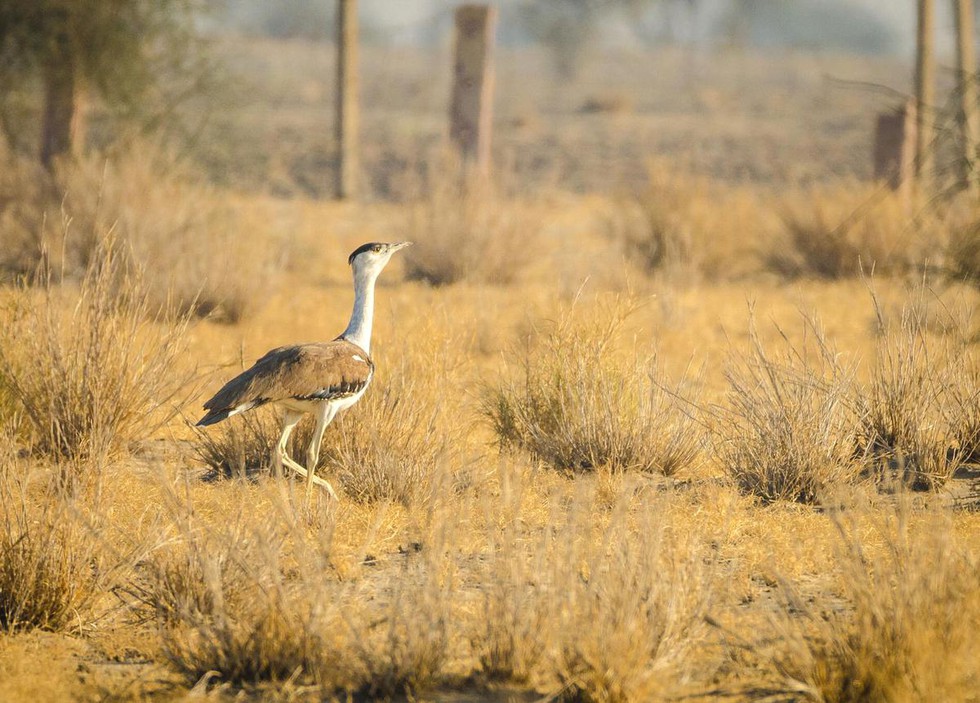
About:
- The Great Indian Bustard, found mainly in the Indian subcontinent, is the flagship grassland species of India.
- It is one of the largest flying birds in the world, and India’s heaviest flying bird.
- The male bird weighs upto 12-15 kg and female bird up to 5-8 kg.
Physical description:
- Black crown on the forehead contrasting with the pale neck and head.
- The body is brownish and the wings are marked with black, brown and grey.
- Diet:
- They feed on grass seeds, insects like grasshoppers and beetles, and sometimes even small rodents and reptiles. The species primarily feed on meswak, sewan grass.
Distribution:
- Its population of about 150 in Rajasthan accounts for 95% of its total world population.
- They are mainly in Jaisalmer district of Rajasthan, including the Desert National Park which is the natural habitat of the species.
- Grasslands of Kutch in Gujarat which is home to second-largest bustard population in India.
- Arid regions of Maharashtra (Solapur), Karnataka (Bellary and Haveri) and Andhra Pradesh (Kurnool)
- It is the State bird of Rajasthan.
Conservation status:
- Listed in Schedule I of the Indian Wildlife (Protection)Act, 1972,
- Listed in Appendix I of CITES,
- Listed as Critically Endangered on the IUCN Red List.
Project Tiger:
- The ‘Project Tiger’, launched in 1973, is a Centrally Sponsored Scheme (CSS) of the Ministry of environment, forests and climate change.
- It is providing funding support to 18 tiger range states for in-situ conservation of tigers in designated tiger reserves, and has put the endangered animal on an assured path of recovery by saving it from extinction.
- It started five decades back with nine tiger reserves, now increased to 51 covering 2.23% of the country's geographical area.

About:
- This will be the first G20 Sherpa Meeting in India.
- The meeting is aimed at fostering growth and building bonds amongst the twenty nations.
- The Sherpa Meeting of the G20 Summit is a preliminary meeting of the government representatives before the main G20 Summit.
- Here the representatives of the member nations hold discussions to firm up possible agreements.
- The final decisions are taken at the G20 summit by the Heads of States.
- Ahead of the main G20 Summit, the Sherpas meeting ensures that the time and resources required at the time of negotiations of the larger heads of state at the final summit are minimized.
- The former CEO of NITI Aayog, Amitabh Kant is the G20 Sherpa from India.
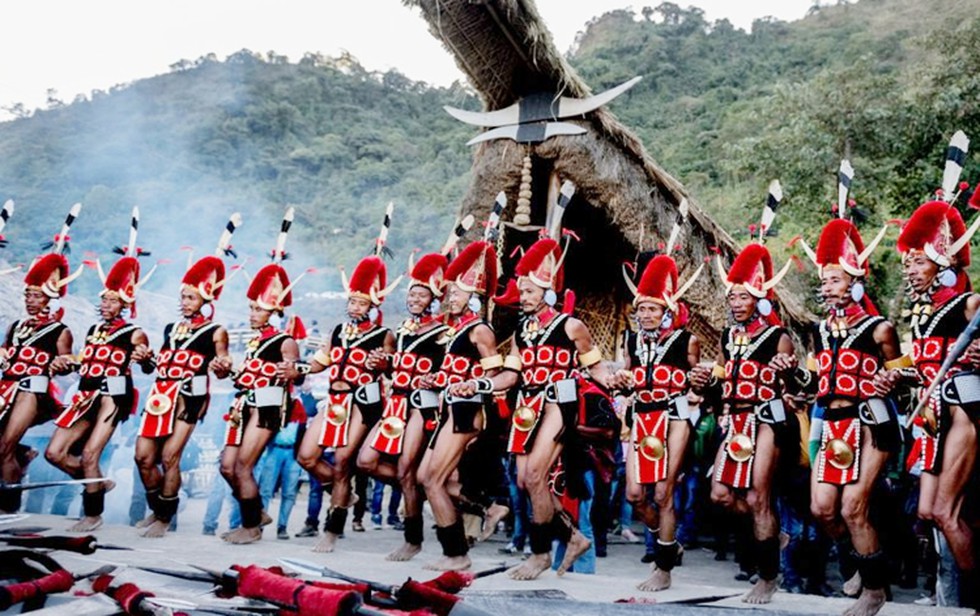
About:
- The first festival was held in 2000.
- Venue: It is held at Naga Heritage Village, Kisama which is about 12 km from Kohima in Nagaland.
- Organizers:It is organized by the State Tourism and Art & Culture Departments of the Government of Nagaland.
- Objective:To encourage inter-tribal interaction and to promote cultural heritage of Nagaland.
Key highlights of festival:
- Festival highlights include the traditional Naga Morungs exhibition and the sale of arts and crafts, food stalls, song and dance shows, indigenous games etc.
- One of the major highlights of this festival is the Hornbill International Rock Festival where local and international rock bands perform.
Nomenclature:
- The festival is named after the bird “Indian hornbill”, which is displayed in the folklore of most of the state's tribes.
- There are 9 hornbill species in India of which Great Hornbill is the most famous.
- It is also called the 'Festival of Festivals'.
Great Hornbill:
- Scientific name: Buceros bicornis.
- Common name: Great Indian hornbill or great pied hornbill.
Range:
- It is found in the Indian subcontinent and Southeast Asia.
- The bulk of the population is found in India, where it is restricted to the Himalayan foothills, hill forests in northeast India and, disjunctly, the wet evergreen forests of west India.
Conservation:
- IUCN Status: Near Threatened.
- It is listed in Appendix I of CITES.
Importance:
- Its impressive size and colour have made it important in many tribal cultures and rituals.
- The great hornbill is the state bird of Kerala and Arunachal in India.
- It is not a state bird of Nagaland, although the hornbill festival is celebrated in Nagaland. Nagaland’s state bird is: Blyth's tragopan.

About:
- The second quarter or Q2 refers to the months of July, August and September.
- India’s Gross Domestic Product (GDP) grew by 6.3 per cent in Q2 on a year-on-year basis.
- In other words, it was 6.3% more than the GDP in the same months in 2021.
- MoSPI also reported that India’s Gross Value Added (or GVA) in Q2 grew by. 5.6 per cent on a year-on-year basis.
GDP and GVA:
- GDP and GVA are the two main ways to ascertain the country’s economic performance.
- Both are measures of national income.
- The GDP measures the monetary measure of all “final” goods and services— those that are bought by the final user— produced in a country in a given period.
- The GDP does this by adding up the total expenditures in the economy; in other words, it looks at who spent how much.
- That is why GDP captures the total “demand” in the economy.
There are four key “engines of GDP growth”. These are:
- All the money Indians spent for their private consumption (that is, Private Final Consumption Expenditure or PFCE)
- All the money the government spent on its current consumption, such as salaries [Government Final Consumption Expenditure or GFCE]
- All the money spent towards investments to boost the productive capacity of the economy. This includes business firms investing in factories or the governments building roads and bridges [Gross Fixed Capital Expenditure]
- The net effect of exports (what foreigners spent on our goods) and imports (what Indians spent on foreign goods) [Net Exports or NX].
GVA:
- The GVA calculates the same national income from the supply side.
- It does so by adding up all the value added across different sectors.
- According to the RBI, the GVA of a sector is defined as the value of output minus the value of its intermediary inputs.
- This “value added” is shared among the primary factors of production, labour and capital.
- The GDP and GVA are related by the following equation:
- GDP = (GVA) + (Taxes earned by the government) — (Subsidies provided by the government).
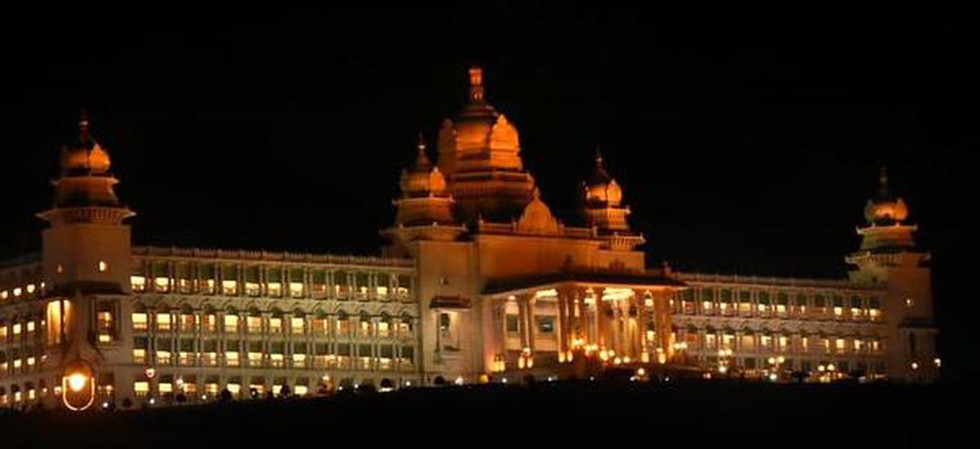
About:
- The dispute between Maharashtra and Karnataka over Belgaum and other border areas is a longstanding issue between the two states.
Origin of the dispute:
- The erstwhile Bombay Presidency, a multilingual province, included the present-day Karnataka districts of Bijapur, Belgaum, Dharwar and Uttara-Kannada (previously North Kanara).
- The Belagavi/Belgaum region at the border of Maharashtra and Karnataka comprises both Kannada and Marathi speakers.
- In 1948, the Belgaum municipality requested that the district, having a predominantly Marathi-speaking population, be incorporated into the proposed Maharashtra state.
- However, the States Reorganisation Act of 1956, which divided states on linguistic and administrative lines, made Belgaum a part of the then Mysore State (which was renamed Karnataka in 1973).
- The area has been under dispute since then.
- The Maharashtra Ekikaran Samiti, formed in 1948, has been fighting for a merger of 800-odd villages in Karnataka with Maharashtra.
- From 2006, Karnataka started holding the winter session of the Legislature in Belagavi, building a massive Secretariat building in the district headquarters on the lines of the Vidhana Soudha in Bengaluru to reassert its claim.
Mahajan Commission:
- In 1966, at Maharashtra’s insistence, then Prime Minister Indira Gandhi established a one-man commission led by Mehr Chand Mahajan, third Chief Justice of India.
- The Commission, which submitted its report in 1967, recommended that 264 villages be transferred to Maharashtra and that Belgaum and 247 villages remain with Karnataka.
- The Commission also additionally stated that Sholapur in Maharashtra and Kasaragode, which is in Kerala, be given to Karnataka.
Four-member committee:
- In 1960, a four-member committee was formed by both States, but it couldn’t arrive at a consensus and representatives submitted reports to their respective governments.

About:
- The ALH MK III helicopters have been indigenously manufactured by Hindustan Aeronautics Limited (HAL).
- They feature state-of-the-art equipment including advanced RADAR as well as Electro optical sensors, Shakti engines, full glass cockpit, high-intensity searchlight, advanced communication systems, automatic identification system as well as search-and-rescue homer.
- The features enable them to undertake maritime reconnaissance as well as carry out SAR at extended ranges even while operating from ships during both day and night.
- The aircraft has the ability to switch roles from an offensive platform with a heavy machine gun to that of a benign one carrying a Medical Intensive Care Unit to facilitate the transfer of critically ill patients.
- A total of 16 ALH Mk-III aircraft have been inducted into the Indian Coast Guard in a phased manner and four of these aircraft are positioned in Chennai.

About:
- Border Security Force (BSF) celebrates its Raising Day on 1 December every year.
- It was on December 1, 1965 that the first sector of the Punjab Frontier of the BSF was raised with its headquarters in Jalandhar.
- Currently, BSF comprises 2.65 lakh personnel, deployed across the international border in 193 battalions.
- BSF plays a crucial role in containing unauthorized entry into or exit from the territory of India and it prevents transborder crimes.
- It also works towards stopping illegal activities such as smuggling.
- After the Indian Army, the BSF is the only Central Armed Police Force in the nation that has an independent air wing, effective artillery regiment, dedicated marine division and a special intelligence branch.
- The BSF is also the sole paramilitary organisation globally to use an active camel cavalry to patrol the sands of the Thar Desert, which comprise of the common border between India and Pakistan.
- The ‘Creek Crocodile - a Quick Reaction Team made of BSF commandos - was also raised to counter threats like that of 26/11.
- They guard the brackish waters of the Kutch region in Sir Creek to prevent cross-border infiltration.
- Despite being a border force, more than 7,000 women of all ranks are serving in the force on the eastern and western theatre.
- This year, BSF will be celebrating its raising day for the first time in Punjab and second time outside Delhi.

About:
- As part of the initiative, the UNDP will distribute the `Jan Dhan’ account kits to waste segregation workers.
- The opening of the `Jan Dhan’ accounts has been facilitated through the UNDP’s plastic waste management programme.
- The waste management promotes the collection, segregation, and recycling of all plastics to move towards a circular economy for the same.
- This is done at ‘Swachhta Kendra’ or material recovery facilities.
- The plastic collected and processed so far has already crossed 1,38,000 metric tonnes.
- The programme also ensures the well-being and financial inclusion of the `Safai Sathis’ or waste-pickers, by linking them to the social protection schemes.
- According to the UN agency, a key objective of the programme is to help move the sector from informal to formal.
- This is done by linking them to social protection schemes like the `Jan Dhan’ accounts, Aadhar cards, `Ayushman Bharat’, pension schemes, and scholarships for children, among others.



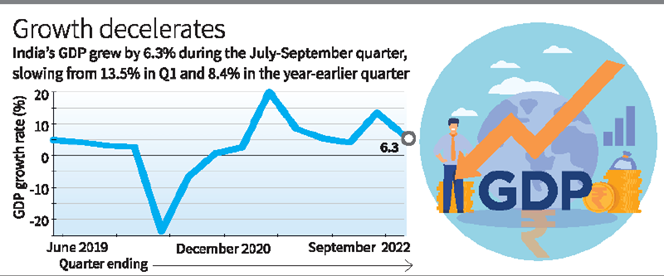


























































































































































.png)
.png)
.png)
.png)
.png)


.png)
.png)
.png)





.png)
.png)






.png)
.png)
.png)
.png)
.png)
.png)
.png)
.png)
.png)

.png)







.png)
.png)


.png)
.png)
.png)


.png)

.png)
.png)





.jpg)

.png)
.png)


.png)

.png)
.png)
.png)

.jpg)

.jpg)


.png)

.png)
.png)
.png)
.png)
.png)
.png)
.png)
.png)
.png)
.png)




.png)

.png)





.png)
.png)
.png)
.png)
.png)
.png)
.png)
.png)
.png)
.png)
.jpg)
.jpg)

.png)
.png)
.png)
.png)
.png)
.png)
.png)
.png)
.png)
.png)
.png)
.png)
.png)
.png)
.png)
.png)
.png)
.png)
.png)
.png)
.png)
.png)



.png)
.png)

.jpg)
.jpg)


.jpg)
.jpg)
.jpg)
.jpg)
.jpg)

.jpg)








.jpg)
.jpg)
.jpg)
.jpg)
.jpg)

















.jpg)
.jpg)







.jpg)


















.jpg)
.jpg)



























































































.jpg)
.jpg)


























.jpg)

.jpg)










.jpg)








.jpg)




.jpg)










.jpg)


















.jpg)












































.jpg)














.jpg)
.jpg)
.jpg)





.jpg)

.jpg)
.jpg)





































































.jpg)


































.jpg)
.jpg)
















































.jpg)












.jpg)


.jpg)




.jpg)
.jpg)
.jpg)

.jpg)
.jpg)
.jpg)
.jpg)

.jpg)
.jpg)
.jpg)

.jpg)
.jpg)
.jpg)
.jpg)
.jpg)
.jpg)
.jpg)
.jpg)

.jpg)


.jpg)
.jpg)
.jpg)
.jpg)
.jpg)
.jpg)
.jpg)
.jpg)
.jpg)
.jpg)











.jpg)
.jpg)





.jpg)
.jpg)
.jpg)
























.jpg)
























.jpg)









.jpg)
.jpg)







.jpg)
.jpg)









































.jpg)
.jpg)
.jpg)
.jpg)
.jpg)

.jpg)
.jpg)
.jpg)
.jpg)
.jpg)


.jpg)
.jpg)
.jpg)
.jpg)
.jpg)

.jpg)
.jpg)
.jpg)
.jpg)
.jpg)
.jpg)
.jpg)
.jpg)
.jpg)
.jpg)
.png)

.png)
.png)

.png)
.png)
.png)
.png)


.jpg)
.jpg)

.jpg)
.jpg)
.jpg)

.png)
.png)
.png)
.png)
.png)
.png)
.png)

.png)
.png)
.png)
.png)
.png)
.png)
.png)
.png)
.png)
.png)





































































-min.png)



.png)




.png)








































